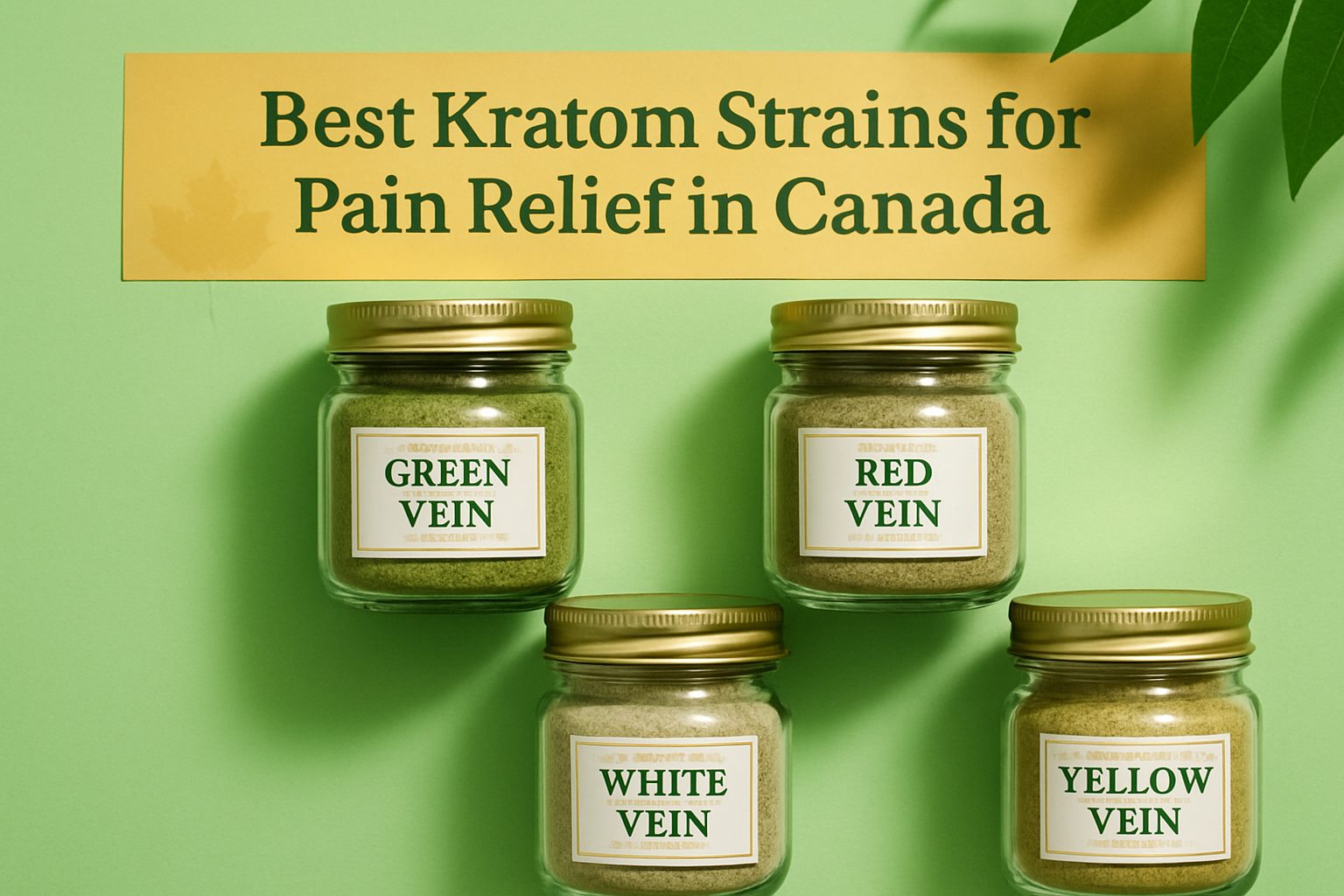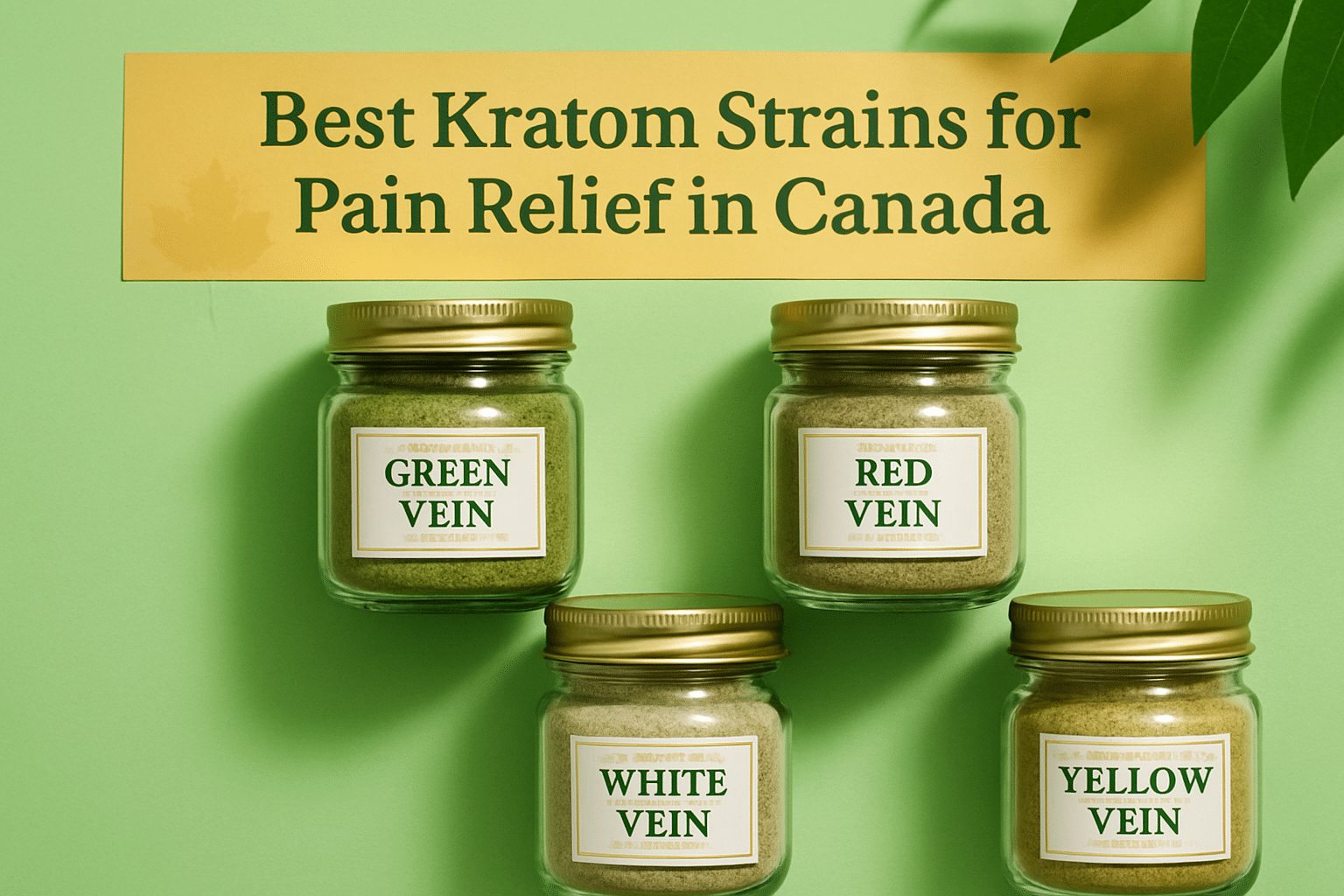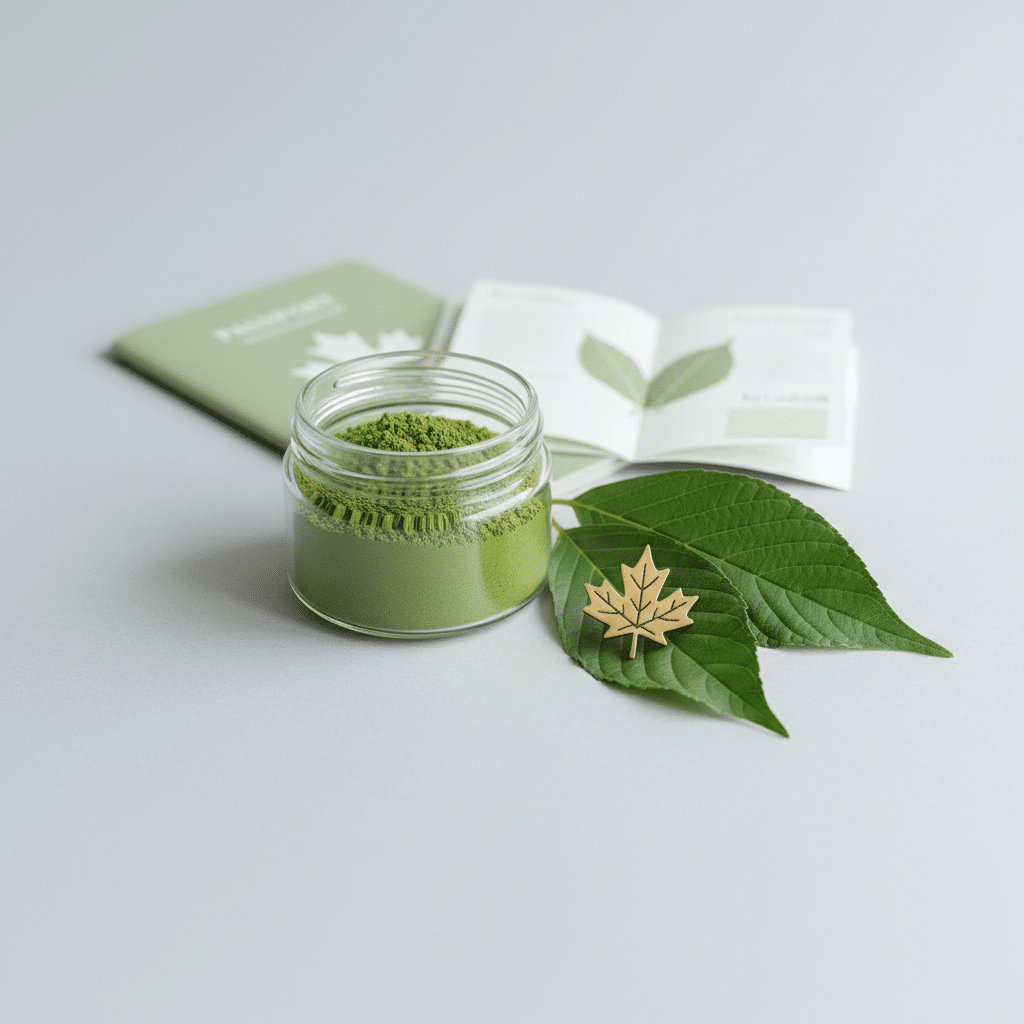
Many Canadians struggle with chronic pain conditions that affect their daily quality of life. While conventional pain medications remain the standard treatment, an increasing number of individuals are exploring natural alternatives for pain management. Kratom, a botanical product derived from Mitragyna speciosa leaves, has gained attention for its potential role in kratom pain relief applications, particularly among those seeking plant-based wellness options.
Understanding How Kratom Works for Pain Management
Kratom pain relief effects stem from the plant’s unique alkaloid composition. The leaves contain over 40 naturally occurring compounds, with mitragynine and 7-hydroxymitragynine serving as the primary active constituents responsible for pain-modulating properties.
These alkaloids interact with the body’s opioid receptors in a complex manner. Research indicates that mitragynine and 7-hydroxymitragynine show opioid receptor binding activity similar to morphine and codeine. This biochemical interaction explains why many individuals report experiencing pain relief when using kratom products.
The plant’s effects vary depending on the strain and alkaloid concentration. Red vein varieties typically contain higher concentrations of pain-relieving compounds, while green and white strains may offer more balanced effects combining pain relief with energy enhancement.
Different kratom strains provide varying levels of pain management support:
-
Red strains: Often chosen for chronic pain conditions and evening use
-
Green strains: May offer moderate pain relief with maintained energy levels
-
White strains: Generally provide mild pain relief with stimulating properties
Different Types of Pain Conditions and Kratom Applications
Chronic pain affects millions of Canadians across various conditions. Understanding how kratom pain relief might apply to different pain types helps individuals make informed decisions about their wellness routines.
Arthritis and Joint Pain ManagementMany individuals exploring kratom for arthritis management Canada report benefits for joint stiffness and inflammation-related discomfort. The alkaloids may help address the persistent aching associated with degenerative joint conditions.
Neuropathic Pain ConsiderationsNerve-related pain presents unique challenges for conventional treatments. Some research participants have noted improvements in nerve pain symptoms, though the safety of kratom for neuropathic pain requires careful consideration and professional guidance.
Fibromyalgia and Widespread PainFibromyalgia patients often seek alternatives to traditional medications. Green kratom for fibromyalgia has gained attention due to its potentially balanced effects that may address pain without excessive sedation.
Injury Recovery and Acute PainShort-term pain from injuries or procedures may benefit from kratom’s pain-relieving properties. However, acute pain situations typically require medical evaluation and professional treatment guidance.
|
Pain Type |
Commonly Used Strains |
Typical Timing |
Considerations |
|---|---|---|---|
|
Chronic arthritis |
Red Bali, Red Borneo |
Evening |
Monitor for interactions |
|
Fibromyalgia |
Green Malay, Red Thai |
Variable |
Start with lower amounts |
|
Neuropathic pain |
Red Maeng Da |
As needed |
Requires medical oversight |
|
Post-workout soreness |
Green Thai, White Horn |
Post-activity |
Temporary use |
Quality and Safety Considerations in Canada
Canadian consumers seeking kratom pain relief products must navigate specific regulatory and quality considerations. The legal landscape creates unique challenges for accessing reliable, tested products.
Legal Status and Regulatory FrameworkHealth Canada considers kratom products intended for human consumption non-compliant and restricts their sale, though possession remains legal. This distinction between personal use and commercial distribution affects how products reach Canadian consumers.
Most reputable kratom suppliers Canada market their products for aromatic, botanical, or research purposes rather than consumption. This regulatory approach means consumers must exercise personal responsibility when using these botanical products.
Laboratory Testing and Purity StandardsQuality assurance becomes critical when selecting kratom products. Kratom products in Canada face contamination risks due to lack of federal testing standards, necessitating third-party lab verification.
Lab-tested kratom pain relief products should include certificates of analysis showing:
-
Heavy metal screening results
-
Microbial contamination testing
-
Alkaloid content verification
-
Pesticide residue analysis
Kratom’s alkaloid content varies significantly by strain and source, demanding batch testing for consistency. This variation means that products without proper testing may deliver unpredictable results.
Identifying Reliable SourcesWhen seeking vendors selling kratom for pain research Canada, look for suppliers who provide:
-
Comprehensive lab testing documentation
-
Clear product labeling and strain information
-
Educational resources about proper handling
-
Responsive customer support for questions
Companies like 365kratomcanada focus on providing lab-tested products with detailed documentation, helping consumers make informed choices about their botanical research materials.
Tips for Using Kratom Safely for Pain Relief
Safe practices become essential when exploring kratom pain relief applications. Understanding proper approaches helps minimize risks while maximizing potential benefits.
Starting Guidelines and MonitoringBegin with minimal amounts to assess individual response. Kratom dosage guidelines Canada suggest starting with small quantities and gradually adjusting based on effects and tolerance. Most experienced users recommend beginning with 1-2 grams and waiting at least 45 minutes before considering additional amounts.
Keep detailed records of:
-
Strain types used
-
Amounts consumed
-
Timing of use
-
Effects experienced
-
Any side effects noted
Medication Interactions and Medical ConsultationKratom’s opioid-like activity may interact with CNS depressants and other medications, requiring medical consultation before combined use. Kratom interactions with pain medications can be serious and potentially dangerous.
Always consult healthcare providers before combining kratom with:
-
Prescription pain medications
-
Anti-anxiety medications
-
Sleep aids
-
Blood pressure medications
-
Any other prescription drugs
Rotation and Tolerance ManagementRegular kratom use may lead to tolerance development. Implementing strain rotation schedules and taking periodic breaks helps maintain effectiveness while reducing dependence risk.
Recognizing Warning SignsMonitor for concerning symptoms such as:
-
Persistent nausea or stomach upset
-
Sleep disturbances
-
Mood changes
-
Increased tolerance requiring higher amounts
-
Withdrawal-like symptoms between uses
Natural Alternatives and Complementary Approaches
Kratom pain relief works best as part of comprehensive pain management strategies. Combining botanical approaches with other natural methods often produces more sustainable results than relying on single interventions.
Integrative Pain Management StrategiesNatural alternatives for chronic pain Canada include various evidence-based approaches that complement kratom use:
-
Turmeric and curcumin supplements for inflammation
-
Willow bark extract for mild pain relief
-
Magnesium supplementation for muscle tension
-
CBD products for inflammation and sleep support
Lifestyle Modifications for Pain ManagementPhysical approaches enhance botanical pain relief efforts:
-
Regular gentle exercise like swimming or walking
-
Stress reduction techniques including meditation
-
Proper sleep hygiene practices
-
Anti-inflammatory dietary changes
Professional Support IntegrationHealthcare professionals can provide valuable guidance for comprehensive pain management. Physical therapists, registered massage therapists, and naturopathic doctors often understand integrative approaches that include botanical products.
Opioid Transition ConsiderationsSome individuals explore kratom for opioid withdrawal Canada as part of medically supervised reduction programs. This application requires professional oversight due to the complexity of opioid dependence and withdrawal management.
Frequently Asked Questions
Is kratom legal for pain relief in Canada?Kratom possession remains legal in Canada, but products marketed for human consumption face regulatory restrictions. Most suppliers sell kratom for aromatic, botanical, or research purposes. Individuals use these products at their own discretion.
Which kratom strains work best for chronic pain?Red vein strains typically provide the strongest pain relief effects, with Red Bali and Red Borneo being popular choices. However, individual responses vary significantly, and some people find green strains like Green Malay more suitable for daytime pain management.
How long does kratom pain relief typically last?Effects usually begin within 30-45 minutes and may last 4-6 hours depending on the amount used, individual metabolism, and strain characteristics. Red strains often provide longer-lasting effects compared to white or green varieties.
Can I combine kratom with prescription pain medications?Combining kratom with prescription medications requires medical supervision due to potential interactions. Kratom’s opioid-like activity may enhance or interfere with other pain medications, creating safety risks.
What should I look for in quality kratom products?Choose suppliers providing third-party lab testing results, clear strain labeling, and educational resources. Look for certificates of analysis showing heavy metal, microbial, and alkaloid testing. Avoid products making medical claims or lacking proper documentation.
How do I avoid building tolerance to kratom?Implement strain rotation schedules, take regular breaks from use, and avoid increasing amounts frequently. Many users rotate between 2-3 different strains and take 1-2 days off weekly to maintain effectiveness.
Conclusion
Kratom represents one option among many natural approaches to pain management for Canadian consumers. Understanding proper selection criteria, safety considerations, and legal frameworks helps individuals make informed decisions about incorporating botanical products into their wellness routines.
Quality testing, professional guidance, and responsible use practices remain essential for anyone exploring kratom pain relief applications. The regulatory landscape in Canada requires consumers to exercise personal responsibility while accessing these botanical research materials.
Ready to explore lab-tested kratom products? Visit 365kratomcanada’s collection to discover quality-assured botanical options including their popular Relax and Goodnight blends, all backed by comprehensive testing and transparent sourcing practices.



